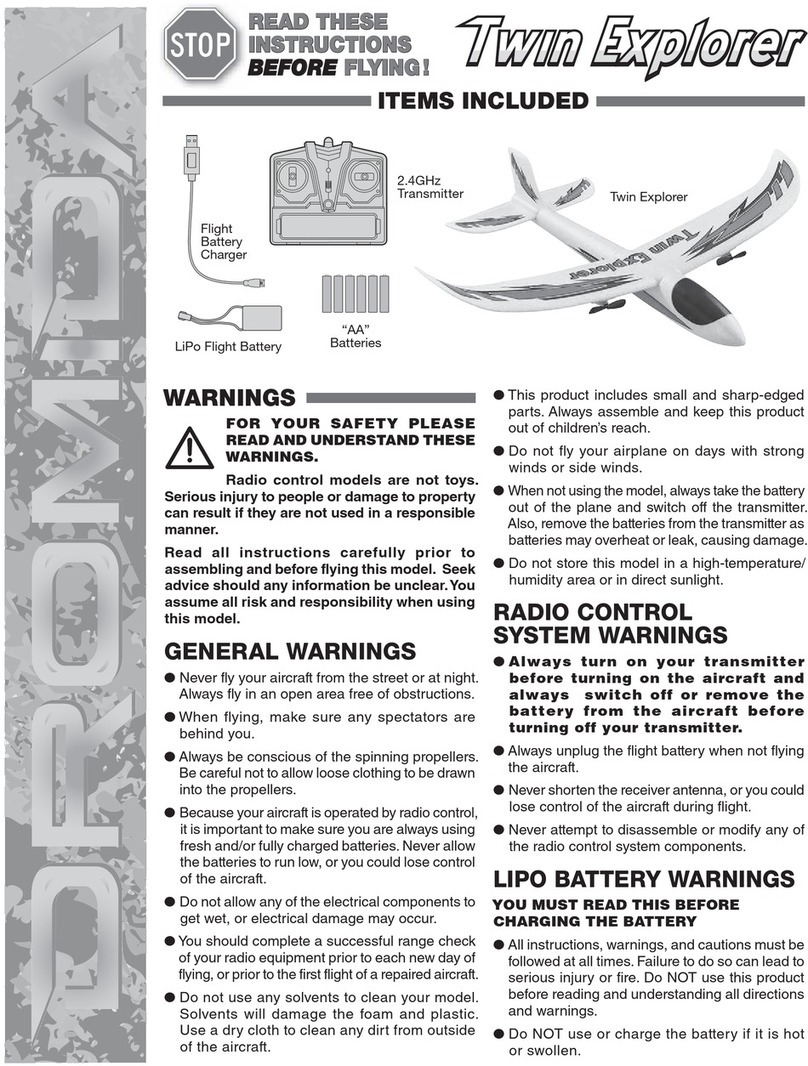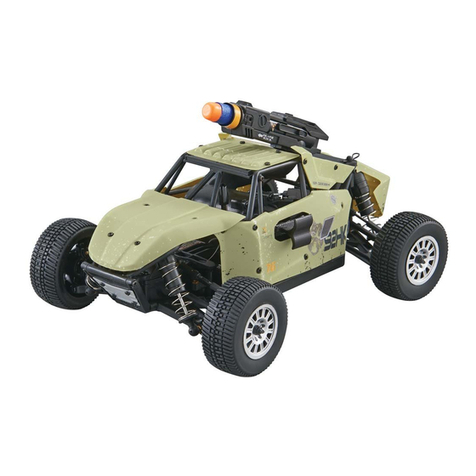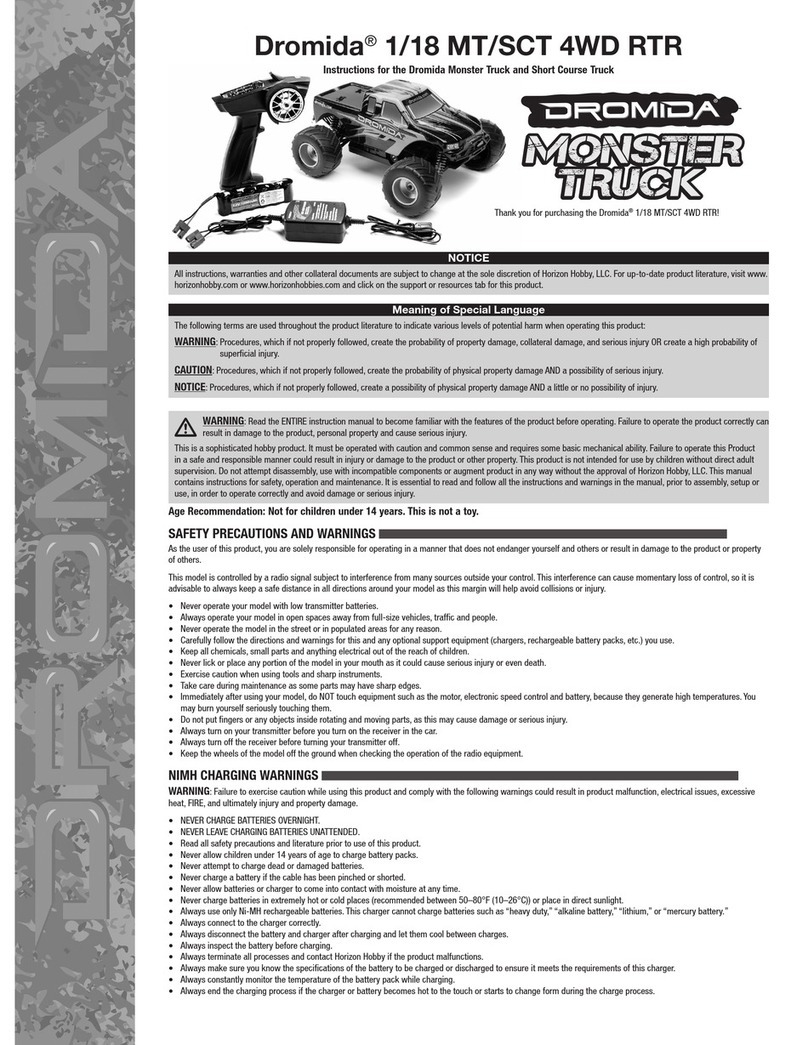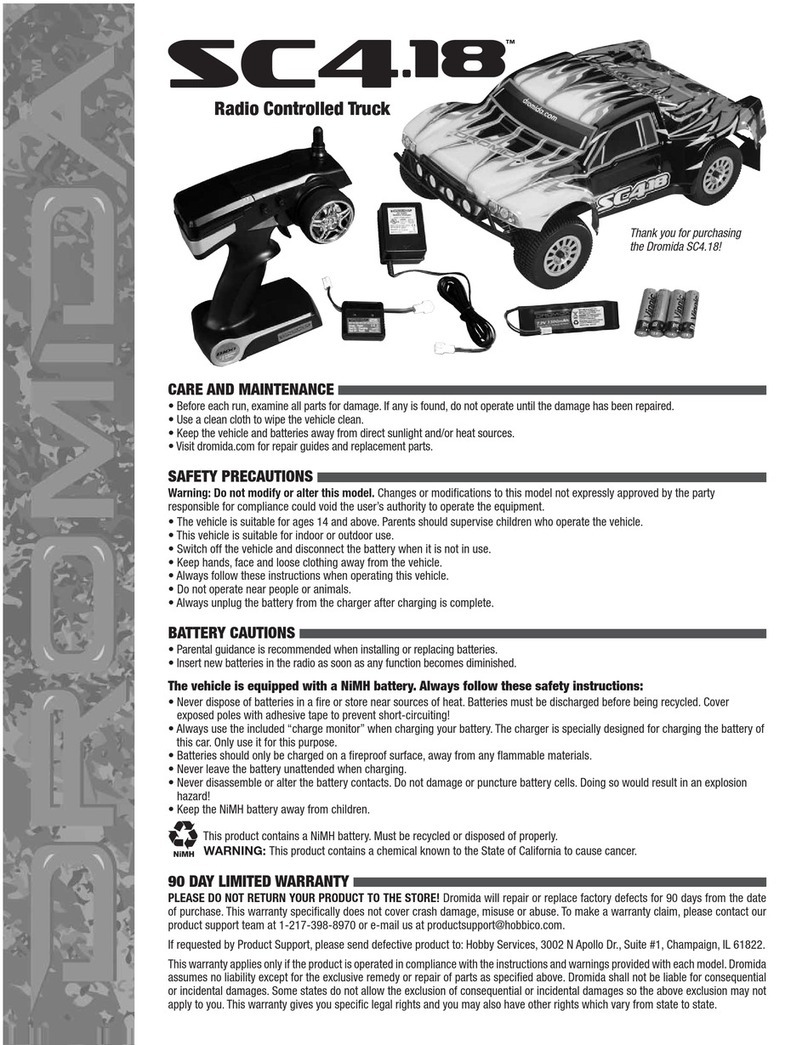
dromida.com© 2016 Dromida, a Hobbico®company DIDA1050
TROUBLESHOOTING
PROBLEM: Transmitter LED does not illuminate when
tuned on.
Solution: Transmitter batteries are installed incorrectly.
Remove batteries and check polarity markings.
Solution: Transmitter batteries are low. Replace the
batteries.
PROBLEM: The model does not respond to the
transmitter.
Solution: The battery needs to be charged. Charge
the battery.
Solution: The battery is not plugged in to the plane.
Plug it in.
Solution: The control linkages are not connected to
the control surfaces. Inspect and reattach or
replace the parts as needed.
Solution: The plane is not linked to the transmitter;
review and follow the linking procedure.
Solution: The transmitter batteries are low. Replace
the batteries.
PROBLEM: Flight time is short.
Solution: The flight battery was not fully charged. Let
the battery cool and charge again.
Solution: The flying conditions are too cold (below
60°F or 15°C).
Solution: The battery is old or damaged. Replace
the battery.
PROBLEM: The plane has excess vibration.
Solution: The prop is damaged. Replace the prop.
Solution: The motor shaft is bent. Replace the motor.
PROBLEM: The model does not fly straight or level.
Solution: The transmitter trims are not set properly.
Adjust the trims until the plane flies straight
and level.
Solution: Check the control linkages for damage.Repair
or replace parts as needed.
PROBLEM: The motor stops in flight.
Solution: When the flight battery voltage drops too low
the battery power to the motor is stopped.
Control surfaces will still operate for a
controlled landing. Land immediately and
recharge the battery.
FCC STATEMENT
FCC ID#: IYF-Dromida Q415
Brand: Dromida
This device complies with part 15 of the FCC rules. Oper-
ation is subject to the following two conditions.
(1) This device may not cause harmful interference.
(2) This device must accept any interference received, in-
cluding interference that may cause undesired operation.
NOTE:THE MANUFACTURER IS NOT RESPONSIBLE
FOR ANY RADIO OR TV INTERFERENCE CAUSED BY
UNAUTHORIZED MODIFICATIONSTOTHIS EQUIPMENT.
Any changes or modifications not expressly approved by
the party responsible for compliance could void the user’s
authority to operate the equipment.
This equipment complies with FCC radiation exposure
limits set forth for an uncontrolled environment.
This equipment should be installed and operated with a
minimum distance of 8 inches [20cm] between the radiator
(transmitter) and your body.
This transmitter must not be co-located or operating in
conjunction with any other antenna or transmitter.
KNOW BEFORE YOU FLY
As a new owner of an unmanned aircraft system (UAS),
you are responsible for the operation of this vehicle and
the safety of those around you. Please contact your local
authorities to find out the latest rules and regulations.
In the United States, please visit:
knowbeforeyoufly.org faa.gov/uas
www.hobbico.com/ama-lipo-warning.html





























